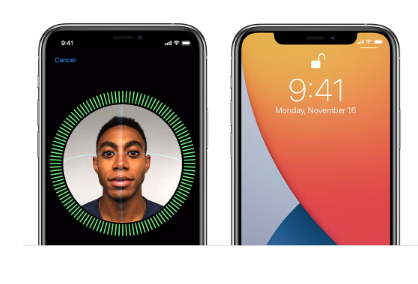Apple's iOS 15.4 brings a new feature that allows people to unlock their devices even when wearing a mask via the Face ID, and it presents a good way of being protected from the virus. It scans the eyes and the saved physical appearance of one's facial structure to verify ownership further as the face remains obstructed with the mask.
The famous tech company made significant changes to their iOS to support on-mask Face IDs, and with this, will it bring back the Touch ID on iPhone 14?
Apple iOS 15.4: Mask Face ID Works Well but Same as Samsung Eye Scan?

Apple's iOS 15.4 brings wonders to its users, and it is with the Face ID that works despite wearing a face mask to protect one from the virus.
However, it is still in beta testing mode now and is not yet available for release to all. Users need to go to the Apple Beta Program website and apply for public use before getting the Mask Face ID feature.
Moreover, the only clear scan with the Mask Face ID is through the eyes, and this may be what Apple tweaked and focused on with this 15.4 release to allow unlocking the device despite wearing masks.
If that is the case, then Apple's 15.4 release is similar to Samsung S9's retinal eye scan biometrics that it launched before the facial recognition software with the S10.
Read also: Apple 2022 Expectations: iMac M2, iPhone 14, iPhone SE 3, AirPods Pro 2, AR/VR Headset, and MORE
Apple: Bringing Back Touch ID to iPhone 14 Release this Year?
There are rumors from multiple Apple insiders and leakers that the Cupertino giant is bringing back the Touch ID to the iPhone 14, alongside the Face ID.

Apple did not do this venture before, and bringing two security systems may mean that it aims to be ready for the future that will have face masks with the iPhone 14.
Nevertheless, this is only a rumor for now.
Apple Security: Touch ID, Face ID, and Passcode
Apple first brought biometric security options with the iPhone 5, which is with the Touch ID or fingerprint scanner, something popular during the time. It was efficient, and it helped in a quick and seamless entry to one's smartphone without the extra seconds to swipe and type in the password or PIN code.
However, there is a flaw, and that is with wet or dirty fingers that could obstruct the process.
So what did Apple do? It introduced a hands-free experience with its devices, particularly with its tenth-anniversary release, the iPhone X.
It was back in 2018 when it first introduced the Face ID or facial recognition system that records the face to be the biometric scan that would decrypt the device whenever picking it up.
Since then, Apple removed the Touch ID from its regular lineup releases, except for the iPhone SE, iPads, and MacBooks.
In 2020, Apple faced a problem, and it was the pandemic that obstructed the view of the facial recognition system because of the government's mask mandate to protect one from the virus. Samsung and other Android users rejoice as they got both the facial recognition system and fingerprint sensors on their devices.
Fast forwards to almost two years later, the iOs 15.4 brought the Face ID to functioning despite facial obstructions, and it is when the pandemic is nearing to end.
This article is owned by Tech Times
Written by Isaiah Richard
![Apple Watch Series 10 [GPS 42mm]](https://d.techtimes.com/en/full/453899/apple-watch-series-10-gps-42mm.jpg?w=184&h=103&f=9fb3c2ea2db928c663d1d2eadbcb3e52)



